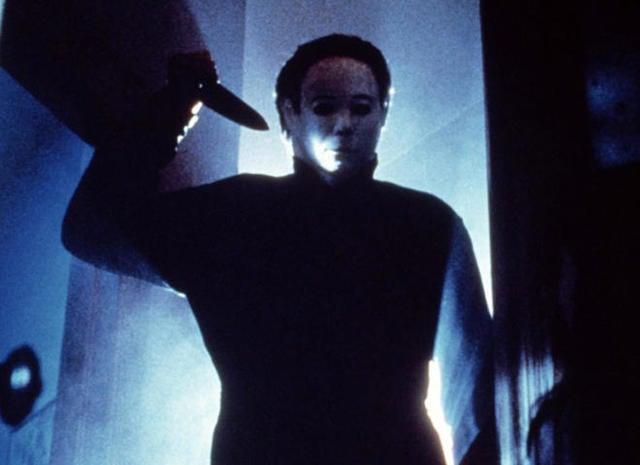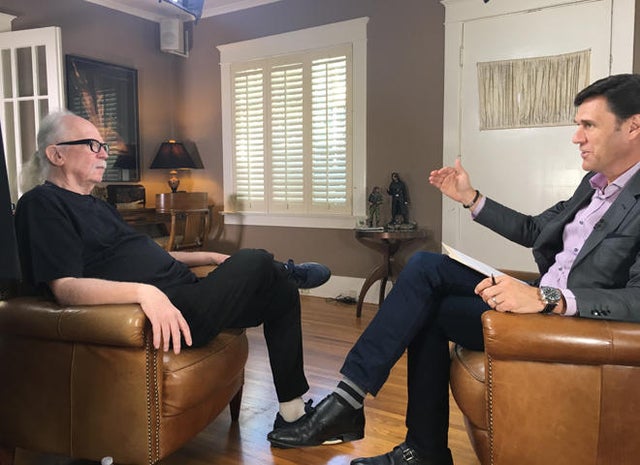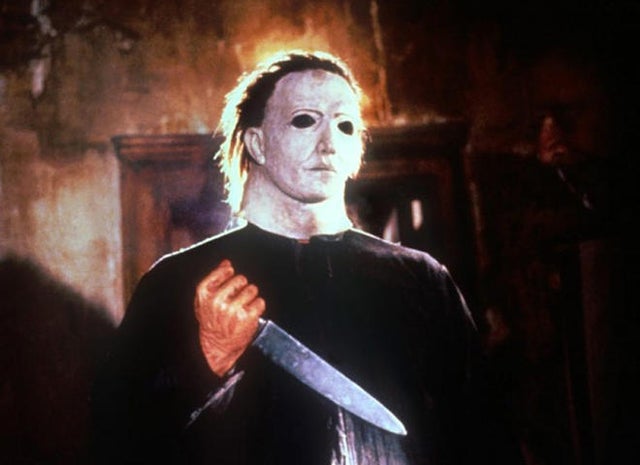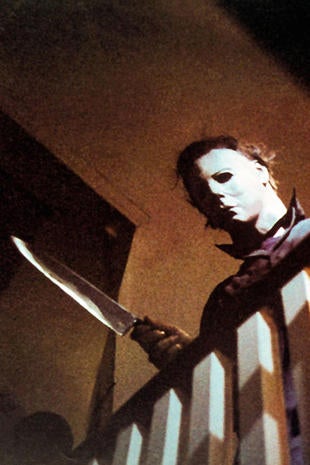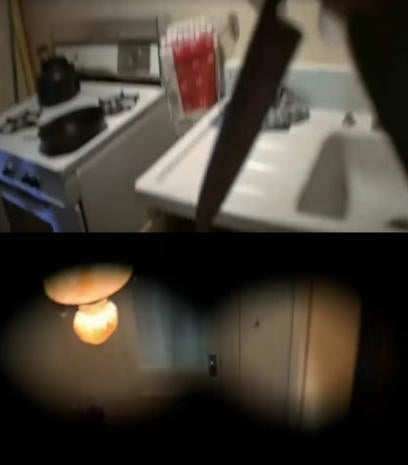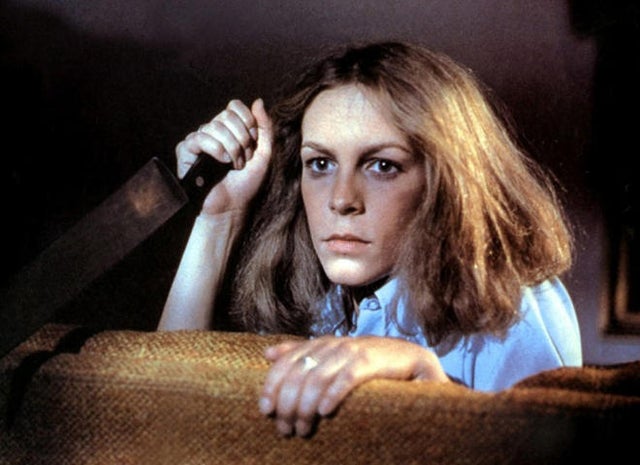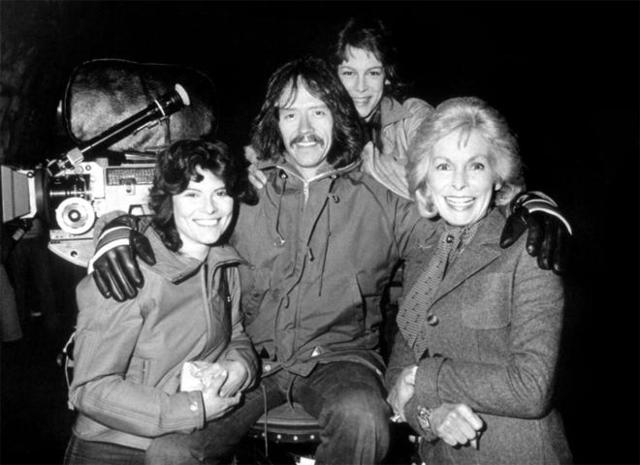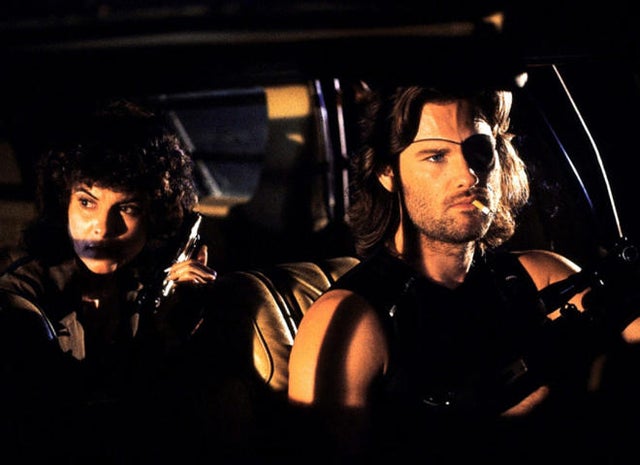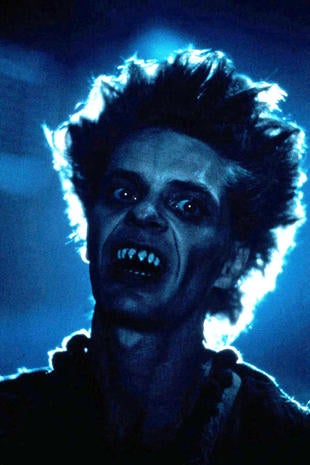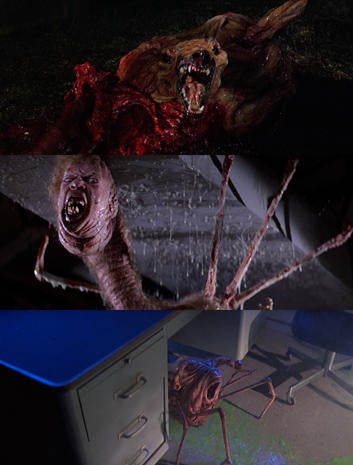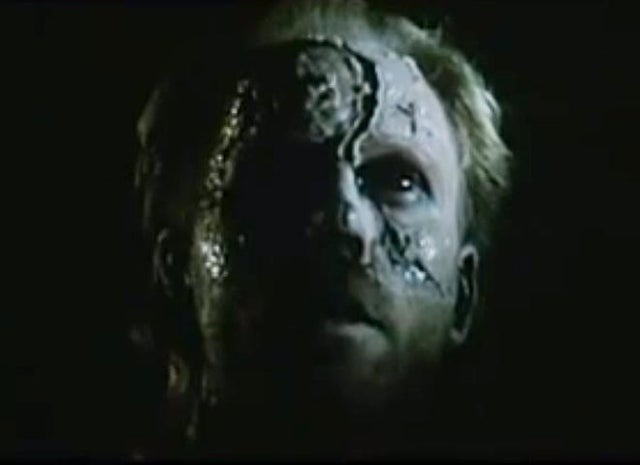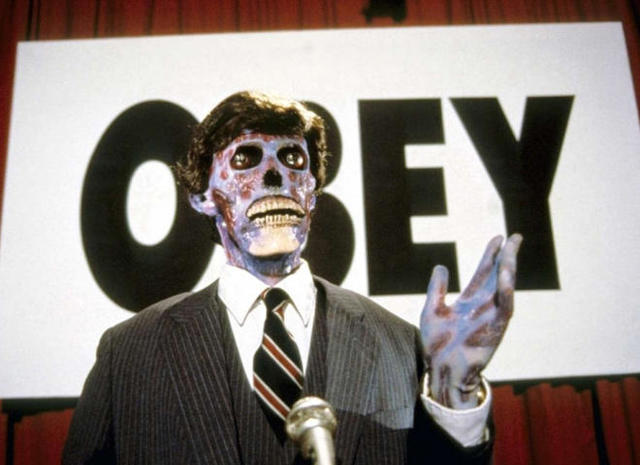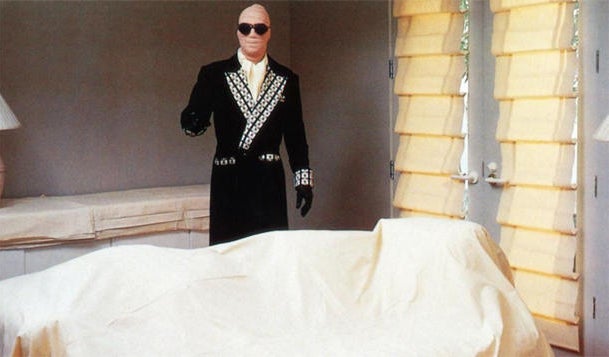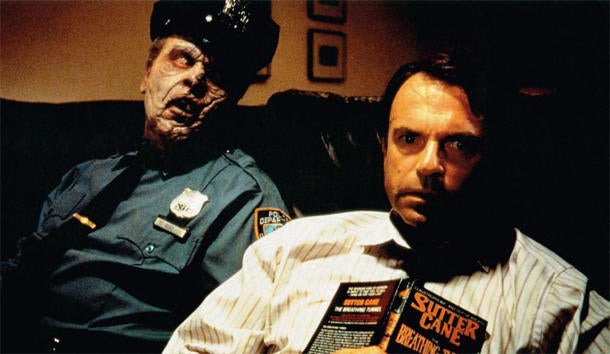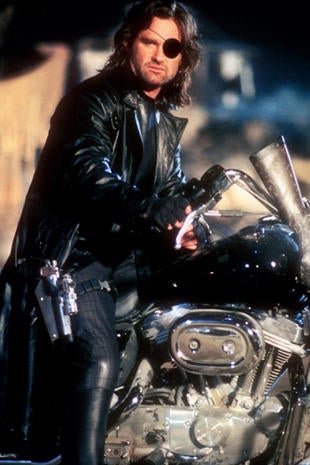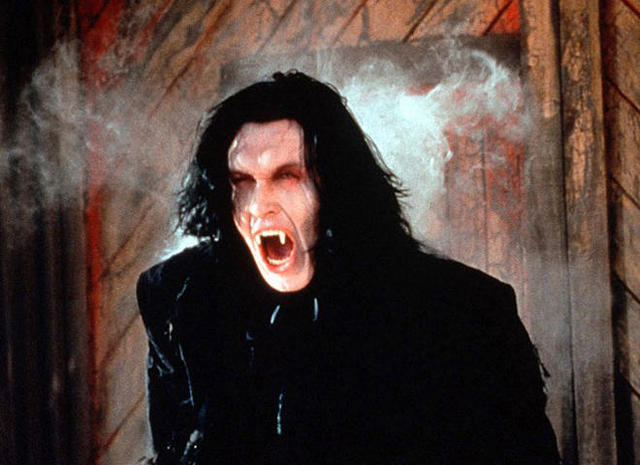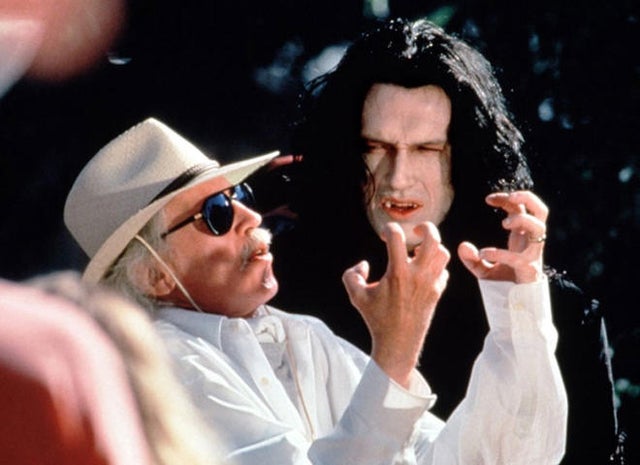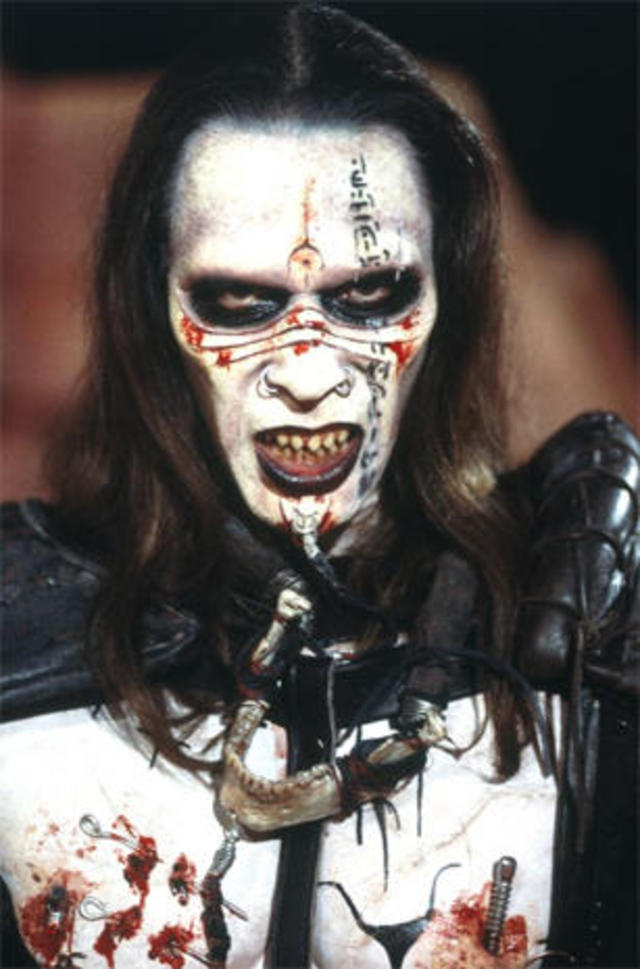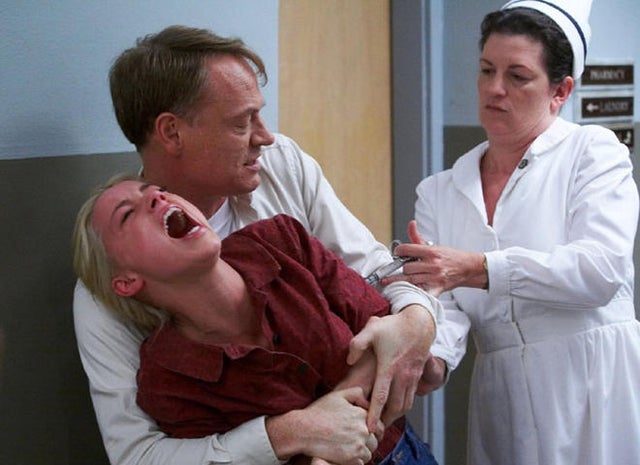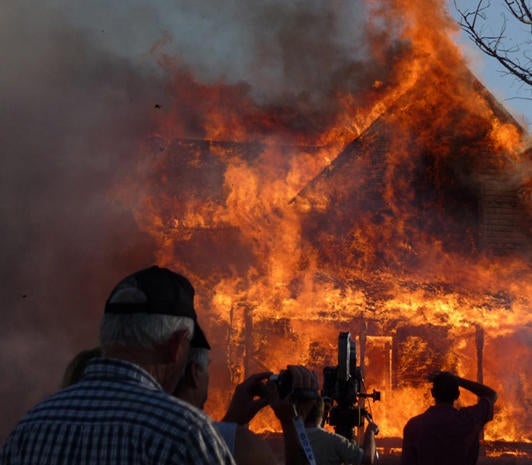The films of horror master John Carpenter
Michael Myers, an escapee from a psychiatric facility, advances upon his prey in John Carpenter's classic "Halloween." The stylish 1978 film rewrote the rules of horror movies, and enshrined its director among the leading genre filmmakers.
By CBSNews.com senior producer David Morgan
John Carpenter
Born in Carthage, N.Y., in 1948 (his father was a music professor), director and composer John Carpenter shot 8mm sci-fi and horror films as a youngster, before attending the University of Southern California's School of Cinematic Arts.
Horror Master
He told CBS News correspondent Lee Cowan that he had his parents to thank for his dual-career.
"I loved science fiction and horror movies, westerns, comedies, everything. Everything that was out in the movies, I went. I loved the movies. I think my mom got me into that. My dad gave me music, my mother gave me love of movies and cinema."
"Dark Star"
Carpenter's first feature, which grew from a USC student film, was the 1974 science fiction-comedy "Dark Star," co-written with Dan O'Bannon (who would later co-author "Alien"). The crew of Dark Star, responsible for destroying unstable planets, must try to disarm a sentient computerized bomb that refuses to deactivate itself.
"Assault on Precinct 13"
Carpenter told Lee Cowan that as a young filmmaker, "I wanted to do westerns. [But] when I finally got my career going in Hollywood, westerns died." He came closest to the genre with "Assault on Precinct 13" (1976), which was inspired by the Howard Hawks western "Rio Bravo." Like the Indians of a 1940s Hollywood film, here gang members attack a police station in South Central Los Angeles, where an officer (Austin Stoker), a prisoner (Darwin Joston), and a secretary (Laurie Zimmer) must fend off the invaders.
"Halloween"
In "Halloween" (1978), a young man escapes from a psychiatric institution 15 years after murdering his older sister and returns to the scene of the crime, repeating the bloody cycle of violence.
"Halloween"
"I wanted the audience not to know whether he was human or supernatural," Carpenter said of Michael Myers, a.k.a. The Shape. "And he had no character. He was blank. He was simply evil. And that was all he was as a character. So I stripped down everything.
"Really he has no back-story in the original 'Halloween.' He has nothing, except he's evil. I can't tell you why he came to this small town to kill people. But it doesn't matter. He's like the wind. He's out there. He's gonna get you."
The incessant evil was driven by the score of the film, also composed by Carpenter.
Click here to listen to an excerpt from the Main Title of "Halloween"
"Halloween"
Carpenter used a gliding Steadicam not just for point-of-view shots but also in general just to move with the characters. "I love moving camera as a director. And the problem with moving camera is that you have to set up these tracks, and it takes a while to set 'em up. Then you have to level it, then they have rehearse. It takes a long time to get a tracking shot. With that Steadicam, you just whip it on the operator, go, and he's off following the actors."
"So in some ways that whole eerie point of view look through the mask was really a matter of necessity?" asked Cowan.
"That's correct. And the Steadicam had a little bit of sway in those days, so there's just a little bit of sailing back and forth -- added a little touch. Lucky!"
"Halloween"
The film outshone its $325,000 budget, and would pull in $47 million in domestic gross, while also sparking a resurgence in independent horror and supernatural films in the late '70s and early '80s.
"It was the most fun I've ever had making a movie," Carpenter said of "Halloween." "It was somehow carefree. We only had 20 days to shoot it. It was ambitious for us at the time. But we all banded together, and all we wanted to do was make this movie, and make it stylish. And it was fun. God, it was fun."
"Halloween"
Jamie Lee Curtis was catapulted to stardom in "Halloween." She would become a "scream queen" in a string of horror titles like "Terror Train," "Prom Night," "The Fog" and "Halloween II," before starring in non-genre films like "Trading Places," "A Fish Called Wanda," "True Lies," and the TV series "Anything But Love."
"Elvis"
Following "Halloween," Carpenter directed the TV films "Someone's Watching Me!" (a thriller starring Lauren Hutton and David Birney), and the biofilm "Elvis," with a terrific performance by Kurt Russell as Elvis Presley.
It would be the first of many teamings of Carpenter and Russell.
"The Fog"
In "The Fog" (1980), the ghosts of a ship's crew killed a hundred years earlier return to the California coastal town where they'd met their doom.
"The Fog"
The ghosts of the crew of the Elizabeth Dane, a ship plundered 100 years earlier, return to exact revenge (because that's just what ghosts do), in John Carpenter's "The Fog" (1980).
"The Fog"
John Carpenter on the set of "The Fog" with actresses Adrienne Barbeau (then Carpenter's wife), Jamie Lee Curtis and Janet Leigh.
"Escape From New York"
Kurt Russell (pictured with Adrienne Barbeau) starred as Snake Plissken, a roguish adventurer who is conscripted into a desperate rescue mission of the U.S. President from within the fortified walls of a future Manhattan island-turned-maximum security prison, in John Carpenter's "Escape From New York" (1981).
"Escape From New York"
Frank Doubleday as an evil henchman of the "Duke of New York," in "Escape From New York."
"The Thing"
Based on John W. Campbell, Jr.'s novella "Who Goes There?" (which was previously filmed by Howard Hawks and Christian Nyby in 1951), "The Thing" starred Kurt Russell, whose Antarctica research station becomes the setting for a showdown against an alien creature that can assimilate and mimic other life forms.
"The Thing"
Some of the gruesome creature effects created by Rob Bottin and Stan Winston for "The Thing."
While some Carpenter horror films are reticent to show evil, in "The Thing" the horror is blatant. "We showed you clearly because it's a monster movie, and we love to see our monsters," Carpenter said. "That's always been that way from 'Dracula,' 'Frankenstein,' 'The Wolf Man, from early days in movies. We wanna see 'em.
"And we had an idea in 'The Thing' that it doesn't look like any one thing. It looks like everything it's imitated throughout the universe. So it was a chance to just go crazy."
"Christine"
John Carpenter directed the 1983 film version of the Stephen King horror novel "Christine," about a 1957 Plymouth Fury possessed by a very vengeful spirit.
"Starman"
Jeff Bridges earned an Oscar nomination for Best Actor in the 1984 science fiction film "Starman," as an alien who manifests himself in the likeness of Karen Allen's dead husband.
"Big Trouble in Little China"
Kurt Russell, joined by Kim Cattrall and Suzee Pai, starred as a gun-toting truck driver who dives into San Francisco's underworld to rescue a woman from Oriental gangsters, in "Big Trouble in Little China" (1986). The film was a tongue-in-cheek pastiche of an action film, supernatural thriller, and martial arts spectacle.
"Big Trouble in Little China"
Thunder (Carter Wong) lets emotional distress get to his head in John Carpenter's "Big Trouble in Little China."
"Prince of Darkness"
"I've got a message for you, and you're not going to like it: Pray for death!"
A mysterious green liquid that appears to be connected to Satan has a devilish effect upon a team of researchers holed up in an abandoned church surrounded by possessed street people, in John Carpenter's 1987 supernatural thriller, "Prince of Darkness."
"They Live"
In the darkly humorous political thriller "They Live" (1988), mysterious glasses reveal to the wearer the true faces of Earth's overlords - creatures who, in the daylight, appear human while spreading subliminal messages to the populace to boost consumerism and promote conformity.
"Memoirs of an Invisible Man"
Based on the novel by H. F. Saint, the sci-fi-comedy "Memoirs of an Invisible Man" (1992) starred Chevy Chase as the victim of an accident that renders him invisible, making him a tempting target for recruitment by the CIA.
"In the Mouth of Madness"
Sam Neill is driven to the brink of insanity by the contents of a horror writer's Lovecraftian book, in John Carpenter's "In the Mouth of Madness" (1995).
"Village of the Damned"
John Carpenter's 1995 remake of of the 1960 British thriller "Village of the Damned" transported the setting to California, where a town's cluster of children, born after a mysterious event, share common characteristics, such as glowing eyes and psychic powers. Christopher Reeve, Mark Hamill, Kirstie Alley and Linda Kozlowski starred.
"Escape From L.A."
Kurt Russell's Snake Plissken returned in "Escape from L.A." (1996), this time on a mission from a theocratic U.S. president to retrieve a powerful weapon from the remnants of Los Angeles.
"Vampires"
Thomas Ian Griffith is the leader of a gang of vampires in pursuit of an ancient relic in John Carpenter's "Vampires" (1998).
"Vampires"
John Carpenter of the set of "Vampires."
"Ghosts From Mars"
In the 2001 science fiction film "Ghosts From Mars," human settlers on the Red Planet are possessed by the spirits of an ancient Martian civilization.
"The Ward"
After a long absence from movie screens, Carpenter returned in 2010 with "The Ward," in which a young woman (Amber Heard) is committed to a psychiatric hospital after burning down an abandoned farmhouse. There she encounters a string of disturbed individuals, and a malevolent spirit.
"The Ward"
Filming John Carpenter's "The Ward."
"The thing about horror is, it's a universal genre, because everybody in the world is scared. We're born afraid," Carpenter said.
"We're all afraid of the same things. We're all afraid of dying. So horror plays everywhere, and it stays in the culture. And as the culture changes, horror changes. The writers and directors come and change it, make it for a new generation. I think that's what's great about it."
